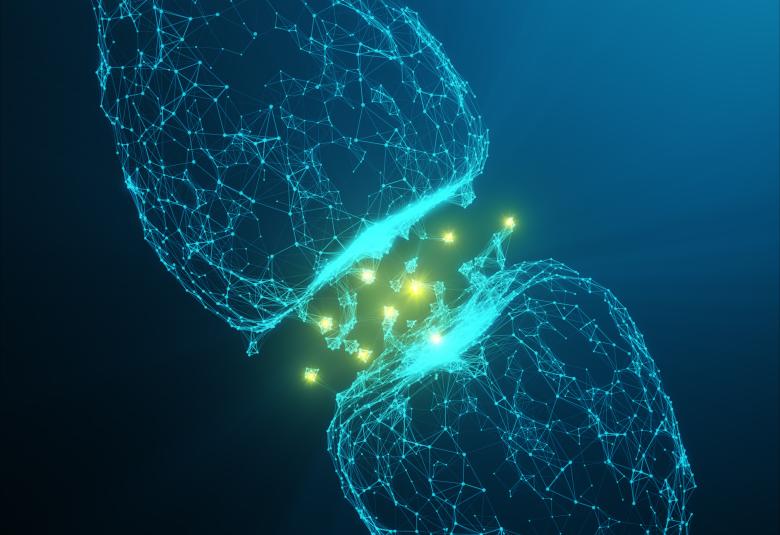Depression is no longer the sole province of serotonin-based research. Imaging studies have uncovered the role dopamine might play. We spoke with Professor Anthony Grace about the important reciprocal relationship between clinical and basic research in psychiatry, as well as finding out more about the session ‘Uncovering the circuitry of depression and how it guides the development of novel treatment strategies’* that he will co-chair at the CINP 2016 congress in Seoul, Korea.
Professor Grace is Distinguished Professor of Neuroscience and Professor of Psychiatry and Psychology at the University of Pittsburgh, Pittsburgh, Pennsylvania, US. His preclinical research uses animal models to better understand the underlying pathophysiology and treatment of psychiatric disorders with a primary focus on schizophrenia and depression.
Is it important to draw from both clinical and basic research when trying to understand the circuitry of human depression?
It’s essential! Clinical research, especially imaging studies, gives us an idea of where to look while basic research on drug effects tells us what potential pathophysiology there might be in depression. That leads us to animal models where we can try and find out what brain circuits normally do and how these might be disrupted in depression.
The give and take between the clinical information we have, the basic information we have and any treatment responses we can elicit enables us, in a co-ordinated manner, to find out what’s wrong with the circuit and how best to fix it.
Why are human brain imaging studies (fMRI and PET) helpful in exploring depression circuitry and the pharmacology of depression?
Research into depression has mainly focused on serotonin, largely based on the nature of the antidepressants available and whose effects were discovered by chance. In rat models of depression, however, the activation of Brodmann area 25 [aka subgenual cingulate area and the rodent homolog, the infralimbic prefrontal cortex] in the frontal cortex decreases the responsiveness of dopamine neurons and elicits depressive signs. This suggests that the dopaminergic system is at least partly involved in depression pathogenesis.
Another lucky find is ketamine. In animal models of depression, ketamine (a type of N-methyl-D-aspartate glutamate receptor (NMDAR) inhibitor) normalises dopamine function by rebalancing two competing dopaminergic circuits – an overactive frontal cortex and an underactive hippocampus. Imaging studies in humans allow us to study these circuits and ascertain whether ketamine is doing the same thing in human brains as it is in animal models.
What key points and learnings can delegates at CINP hope to gain from attending session S1 on the 3rd of July?
We hope to describe a circuit-based system that will allow the targeted treatment of depression. We’ll do this by looking at some of the various clinical investigations and animal model studies in which specific areas of the brain have been identified as the sites of depression pathophysiology.
Thus, we’ve invited Gitte Moos Knudsen from Denmark to give an overview of the brain regions associated with depression and the connectivity of these areas. Qiyong Gong from China will describe how connectivity analyses in patients might predict therapeutic response. And my co-chair, Alan Frazer from Texas in the USA will describe the depressed brain’s response to ketamine and the differences between the neuronal circuits underlying its acute and sustained effects.
Overall, the symposium will provide data that translate between human depression and animal models where the key circuits involved in the development and expression of depression have been uncovered. We’ll also describe how the interactions among these circuits are regulated, and how novel therapeutic targets may help to restore the balance in the brains of individuals with major depressive disorder.
Why is it important for psychiatrists to keep abreast of depression research?
Keeping abreast allows psychiatrists to have a better understanding of depression beyond the textbook: much is so new it hasn’t yet entered the text book. For example, the ways the dopaminergic and serotonergic systems interact and the role of dopamine in depression symptomatology. Also, psychiatrists need to know about new ways to treat depression, and how they work.
What do we still need to know in order to improve approaches to treatment of depression?
Understanding brain circuitry will help a lot. We need to learn more about susceptibility to mental illness and also resilience – why some people become ill while others don’t and why some people bounce back when others don’t.
In psychiatry we are currently seeking to personalize medicine. To be able to do this we need clinical biomarkers of disease. If we can identify, for example, susceptibility markers, we may be able to intervene in a psychosocial way not only to treat but maybe to prevent illness.
Major depressive disorders are the ‘common cold’ of psychiatry. It’s important to understand how patients become ill – what that disease state is – so that we can figure out how best to help them. The more we know about the biology of disease, the better we can understand where it comes from.
How do you see the evolution of psychiatry as a profession?
Currently, there is a big push to find clinical biomarkers - hard diagnostic criteria - that will allow diagnoses to be made beyond the diagnostic interview and that are reproducible. Personalized medicine will eventually allow us to diagnose patients and then give them medicines that are effective for their specific condition rather than trialling a variety of drugs in the hope that one of them will work.
Hopefully, we will get beyond serendipity and not use drugs discovered by chance but which will act to actually fix whatever is wrong with the brain.
What do you think have been the most important breakthroughs?
Ketamine and its speed of action. Patients who are acutely suicidal cannot wait for drugs to work.
Also, imaging studies which have pointed to Area 25 and its hyperactivity. Now we have a target for further studies to determine exactly what is driving the pathology of depression.
* For details of the Symposium S1: – visit https://www.cinp2016.com




